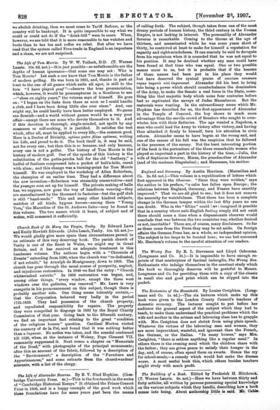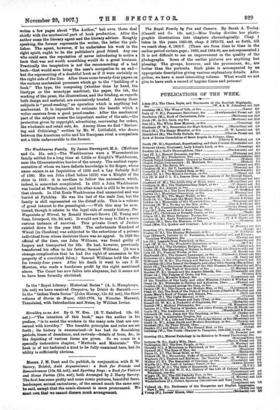The Building of a Book. Edited by Frederick H. Hitchcock.
(T. Werner Laurie. 6s. net.)—Here we have between thirty and forty articles, all written by persons possessing special knowledge on the various subjects which they handle, describing how a book
comes into being. About authorship little is said. Mr. Cable- , . writes a few pages about "The Author," but even these deal chiefly with the mechanical part of book production. After the author come the literary agent and the literary adviser. Roughly speaking, the former represents the writer, the latter the pub- lisher. The agent, however, if he undertakes his work in the right spirit, ought to be the publisher's good friend. Any one who could earn the reputation of never introducing to notice a book that was not worth something would do a great business. Practically the temptation is not the recommending of a bad book—that would soon bring the man's occupation to an end— but the representing of a doubtful book as if it were certainly on the right side of the line. After these come twenty-four papers on the various mechanical processes which go to the "building of a book." The type, the composing (whether done by hand, the linotype or the monotype machine), the paper, the ink, the working of the press, the illustrations, and the binding, as regards both design and material, are successively treated. Among these subjects is "proof-reading," an operation which is anything but mechanical. It is impossible to estimate the benefit which a writer receives from a good proof-reader. After the mechanical part of the subject comes the important matter of the sale,—the protection given by copyright, advertising, canvassing for orders, the wholesale and retail sale, &c. Among these we find "Review- ing and Criticising," written by Mr. W. Littlefield, who draws between the American critic and his European rival a comparison not a little unfavourable to the former.



















































 Previous page
Previous page